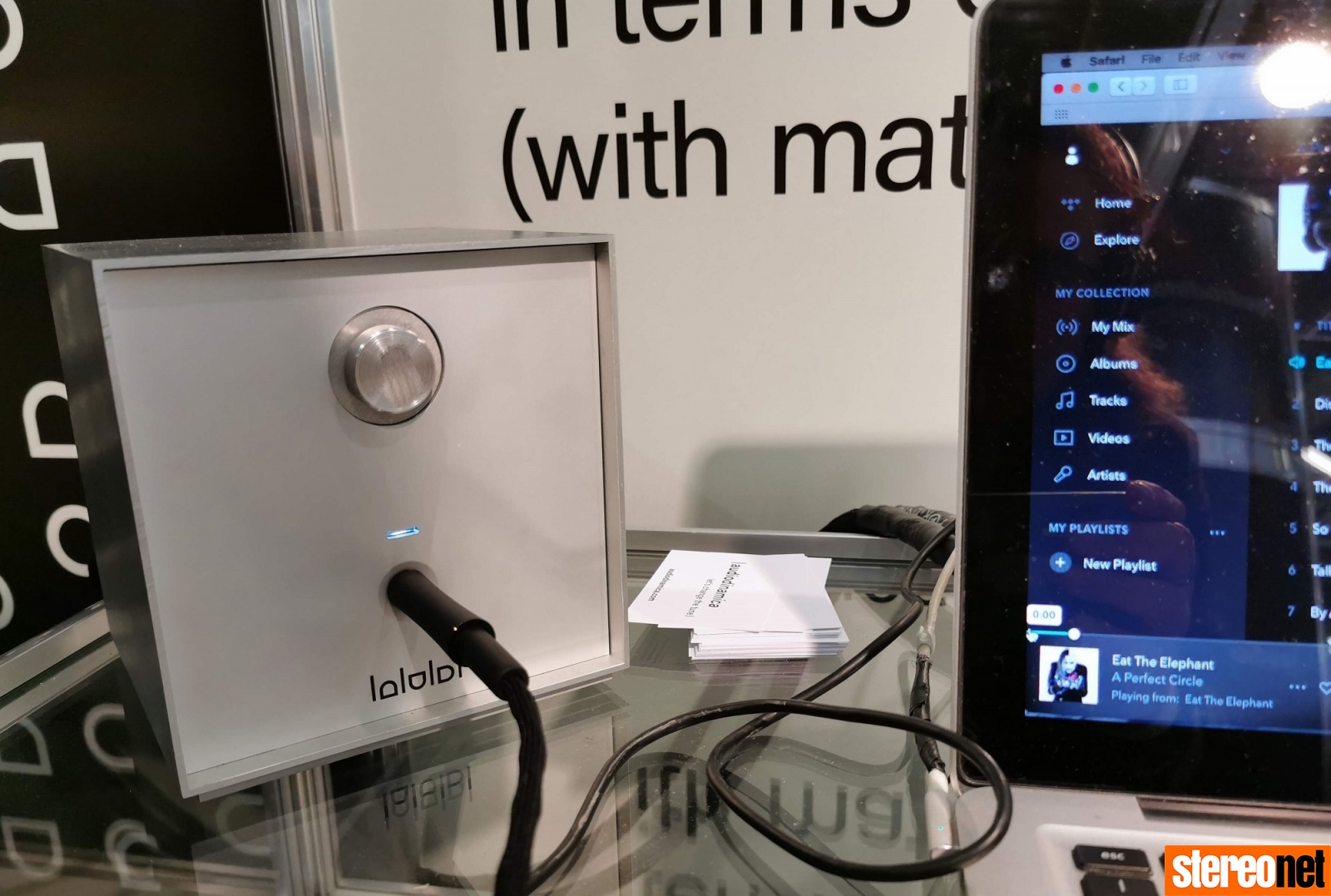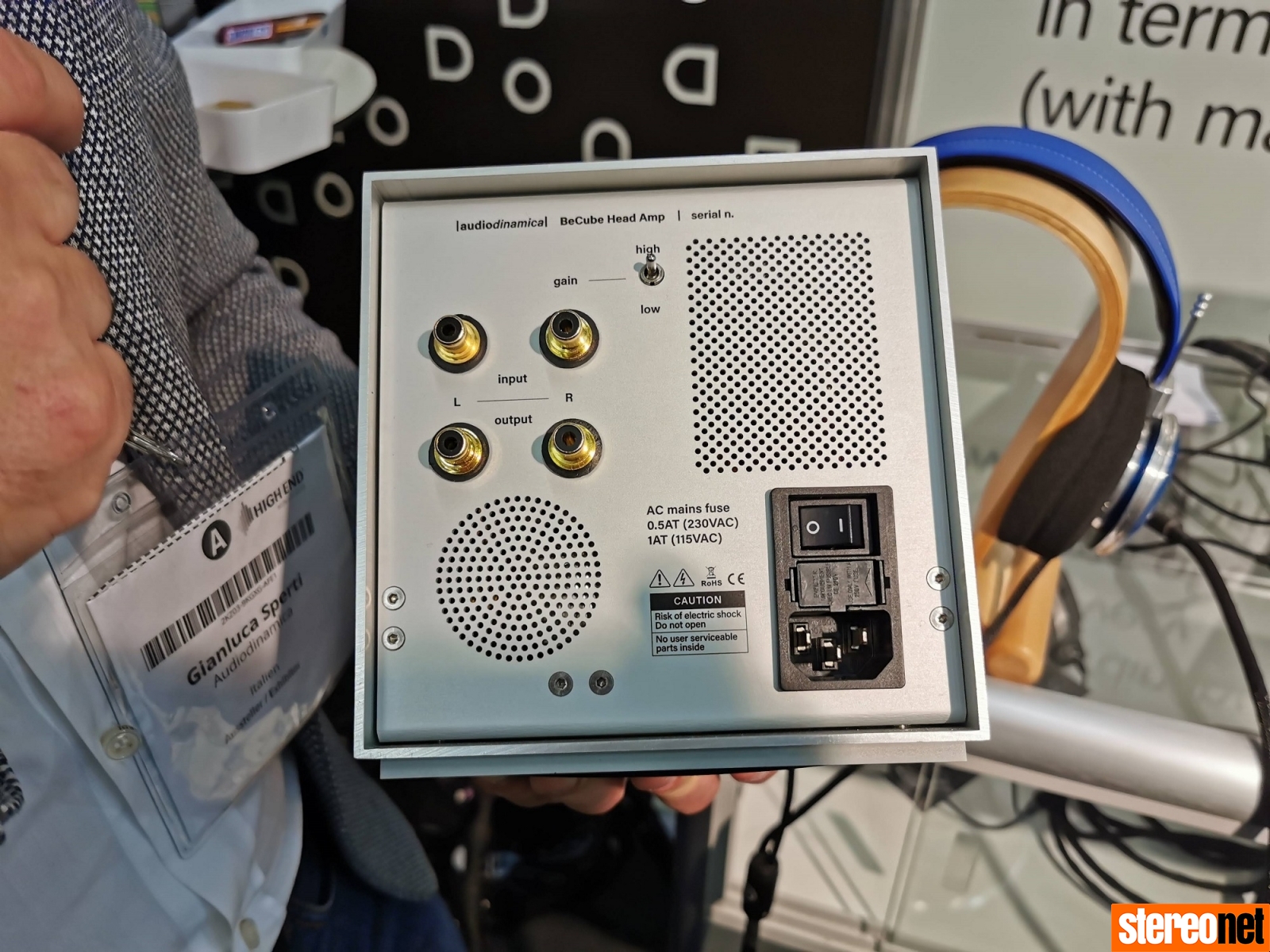AUDIODINAMICA BECUBE HEADPHONE AMPLIFIER DEBUT AT HIGH END MUNICH

High End Munich featured many new components; however, it's especially great to be asked to check out a company's prototypes. One such honour was bestowed upon us by Audiodinamica with its upcoming headphone amplifier.
Audiodinamica's BeCube Headphone Amplifier has been in the works for around a year before it made its debut at the Munich show. Naturally, the curiously cuboid component fits in with the rest of the brand's BeCube system.
Head of Product Development and Co-Founder, Gianluca Sperti, told us that they have been through a variety of different versions, measurements and listening tests with several headphones and beta-testers. The roll call included the Sennheiser HD800 and HD800s, Focal Utopia, Fostex TH900, Denon AH-D7200 and 2000, AKG K1000 and 501, Grado 325, and Beyerdynamic DT990.

Under the BeCube head amp's hood, it is essentially a solid-state power amplifier with two direct coupled complementary stages with minimal feedback. However, you also get pre-amp outputs connected to RCA on the back panel.
Audiodinamica uses low noise jFET's from linear systems at the input and TO220 MOSFET's at the output for an increased current drive and reduced output impedance.
The devices are accurately matched and controlled against thermal runaway. Additionally, there is a super-fast and highly sensitive protection circuit that will disconnect your headphones in case the power stage drifts too much from the factory bias point. The company took this route after observing a very stable and reliable output offset in preference to servo bias.

On the back of the unit is a toggle to switch between +3dB and +9dB gain but that switch doesn't only change the gain of the amplifier, it also adjusts the current flowing through the power MOSFETs making them run hotter at the high gain position.

The result is more headroom for hard-to-drive headphones even though the general performance and character of the amplifier don't change.
The power supply is based on a low flux toroidal transformer encased in a Faraday shield, SiC Schottky diodes, a tuned passive filter and a discrete low noise regulator.
In terms of performance, the prototypes showed a very low residual noise and distortion that stays below 80dB even at 1W on a 32-ohm load, it is mainly second order. Bandwidth is extensive from DC up to the MHz region.

The chart shows an output signal of 1mVrms at 633Hz, which is there as a reference. You will also notice that there is practically no trace of noise at 100Hz after the power supply or irradiated noise from the transformer at 50Hz.
Even though it was a prototype on the stand, this headphone amplifier possessed an inky-black, dead quiet background.
Sales and Marketing Manager and Co-Founder, Angelo Zilio, told us that they are still refining things, but what we discovered was that the BeCube head amp is neutral and natural. Something that was made even more apparent when swapping between different headsets as it was the distinct character of the cans that was the most noticeable difference.

Even on the stand at the show, the prototype's silent running enabled the piano intro to A Perfect Circle's Eat The Elephant fill my ears with their natural-sounding harmonics. Similarly, the keys and vocals of Silent All These Years by Tori Amos came through expressively and clearly.
Pushing some classic Megadeth through the Beyer's and Peace Sells... sounded expansive and urgent.
We look forward to the BeCube Headphone Amplifier coming to market soon. Furthermore, the BeCube head amp can be customised with switchSKIN front panels and the outer shell can be ordered in different colours and finishes.
For more information, go to Audiodinamica.
Jay Garrett
StereoNET’s resident rock star, bass player, and gadget junkie. Jay heads up StereoNET as Editor for the United Kingdom and Europe regions. His passion for gadgets and Hi-Fi is second only to being a touring musician.
Posted in: Headphones
JOIN IN THE DISCUSSION
Want to share your opinion or get advice from other enthusiasts? Then head into the Message
Forums where thousands of other enthusiasts are communicating on a daily basis.
CLICK HERE FOR FREE MEMBERSHIP
Trending
applause awards
Each time StereoNET reviews a product, it is considered for an Applause Award. Winning one marks it out as a design of great quality and distinction – a special product in its class, on the grounds of either performance, value for money, or usually both.
Applause Awards are personally issued by StereoNET’s global Editor-in-Chief, David Price – who has over three decades of experience reviewing hi-fi products at the highest level – after consulting with our senior editorial team. They are not automatically given with all reviews, nor can manufacturers purchase them.
The StereoNET editorial team includes some of the world’s most experienced and respected hi-fi journalists with a vast wealth of knowledge. Some have edited popular English language hi-fi magazines, and others have been senior contributors to famous audio journals stretching back to the late 1970s. And we also employ professional IT and home theatre specialists who work at the cutting edge of today’s technology.
We believe that no other online hi-fi and home cinema resource offers such expert knowledge, so when StereoNET gives an Applause Award, it is a trustworthy hallmark of quality. Receiving such an award is the prerequisite to becoming eligible for our annual Product of the Year awards, awarded only to the finest designs in their respective categories. Buyers of hi-fi, home cinema, and headphones can be sure that a StereoNET Applause Award winner is worthy of your most serious attention.





